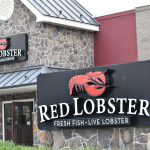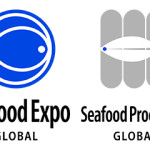Seafood operators would do well to develop products for the quick-service restaurant sector and should increase the variety of preparations or create more bundled offerings that will appeal to light users at other restaurant categories.
These were two of the takeaways from restaurant research commissioned by the National Fisheries Institute and conducted by the NPD Group.
The research was unveiled Thursday at the Global Seafood Market Conference at the Loews in Santa Monica, Calif. The NPD research, presented by Warren Solocheck, showed that seafood entrée servings have steadily declined since 2007, and fine-dining is the only restaurant category that has slightly increased its seafood entrées since 2010, due in part to a slight uptick in business travel.
“Seafood has high value perception, but Americans are sensitive about what they are spending at restaurants,” said Solocheck. The protein’s menu growth is greatest in the West North Central region of the United States.
The consumer’s willingness to pay for seafood at lunch at a casual-dining restaurant is on target with what is actually being paid, with a sweet spot between $10 to $15 per entrée. However, consumers may be unwilling to pay much more at dinner than what they are spending, with a pricing sweet spot between $15 and $20.
The top reasons consumers say they ordered seafood at casual-dining varies, but heavy, medium and light users all mentioned ordering seafood because they wanted something healthful.
Steve Lutz, executive VP at Nielsen Perishables Group, presented the GSMC audience with retail seafood trends and drivers of consumer preferences. Seafood retailers need to capitalize on the consumer’s desire for fresh product and their priorities, which are focusing on healthful, convenient, premium and multicultural products, said Lutz.
He urged retailers to look at increased seafood category segmentation, including information for customers to understand what is in the seafood case. Retailers also should look at other products that use mainstream, premium and super premium product offerings with corresponding price points. “You have to help the consumer differentiate and find products they’re willing to pay for,” said Lutz.
Large retailers would also do well to study their store performance and do side-by-side comparisons to increase seafood’s performance. “Retailers don’t necessarily know what’s right, they know what they did last,” said Lutz. “What they also don’t know is competitor tactics.”
Chris Lischewski, president and CEO of Bumble Bee Foods LLC, closed the event’s final session announcing that the location of next year’s conference, which will be in Florida at the Eden Roc Renaissance Miami Beach from 14 to 16 January.





